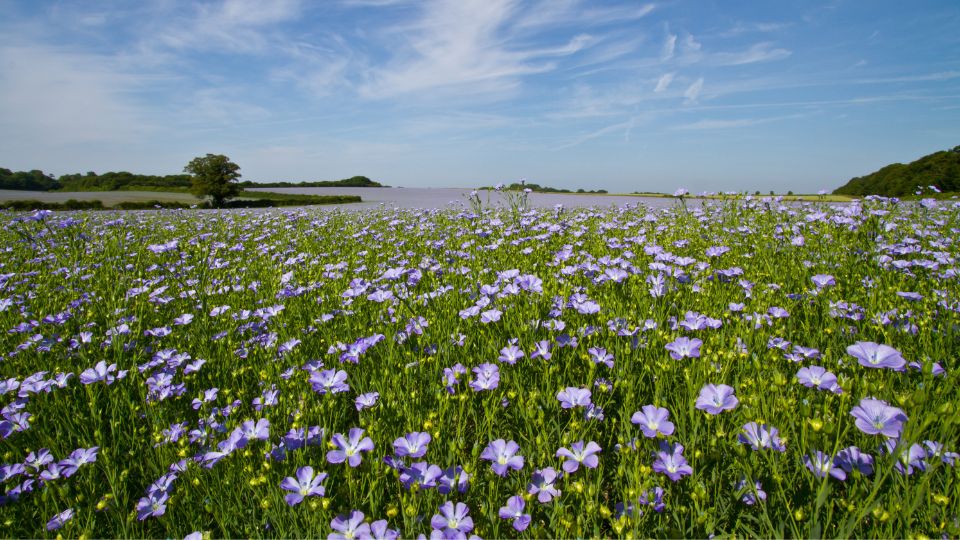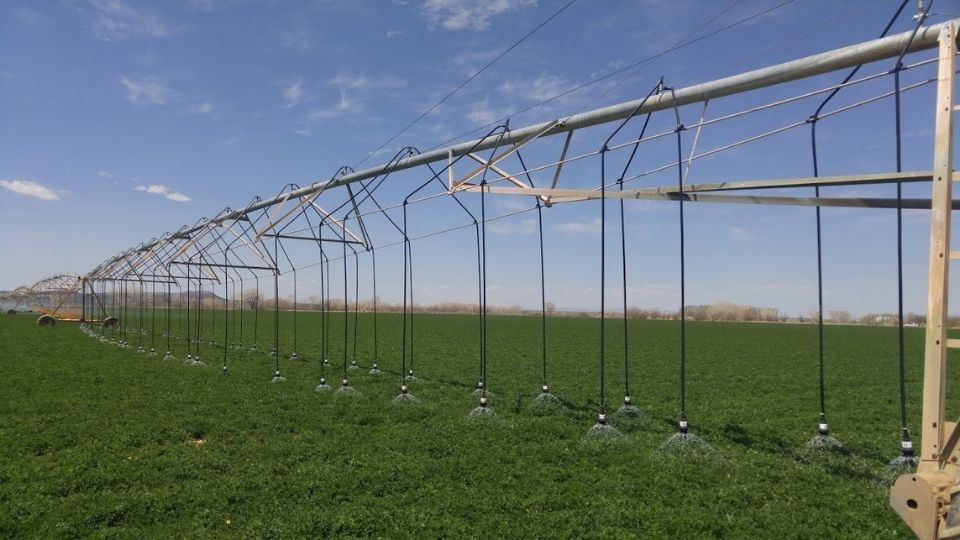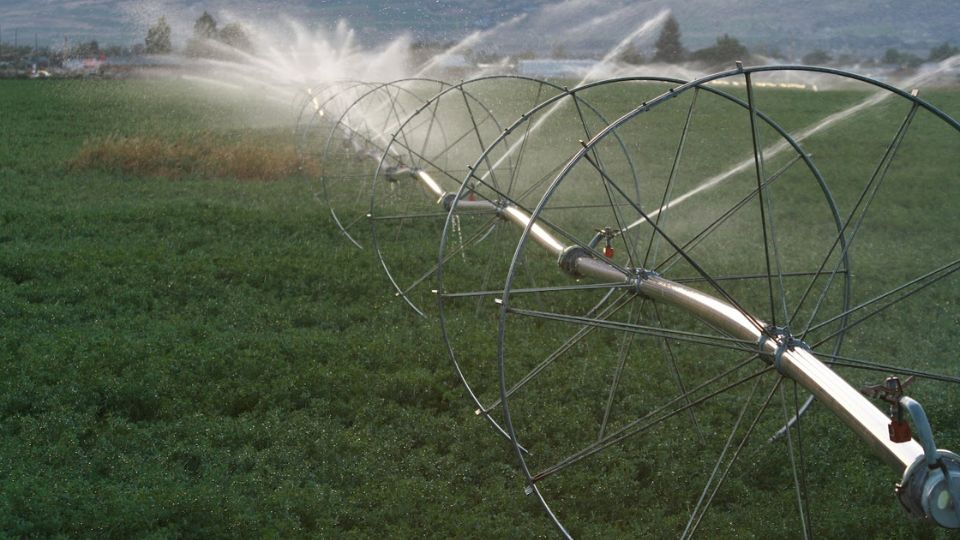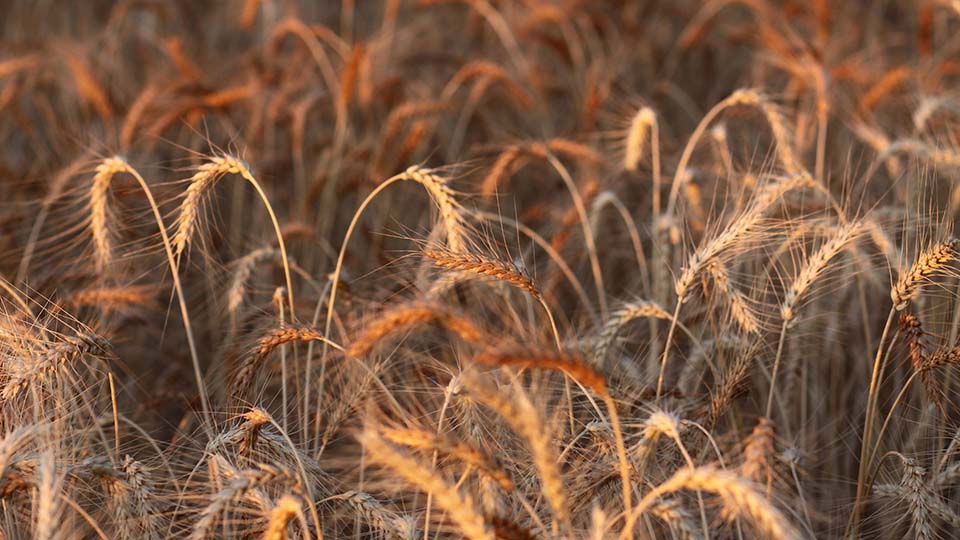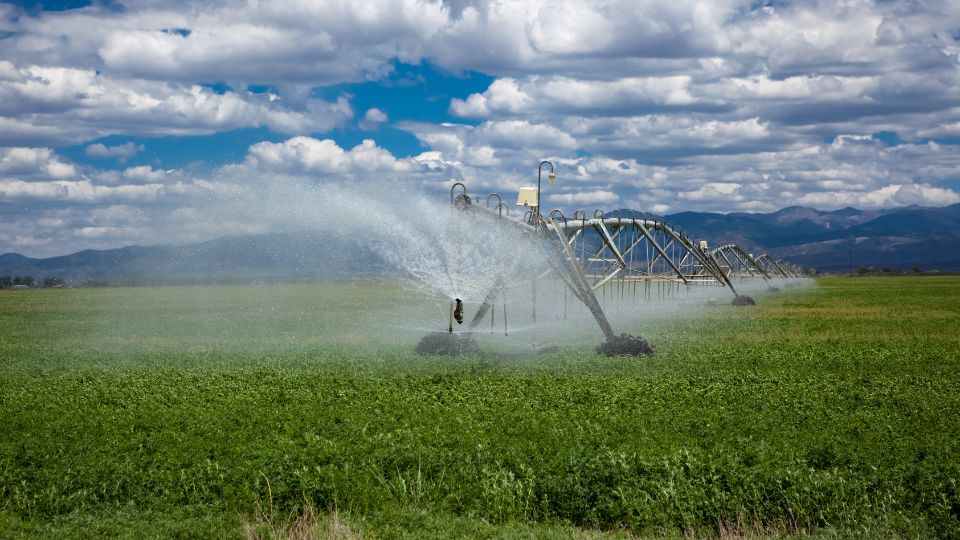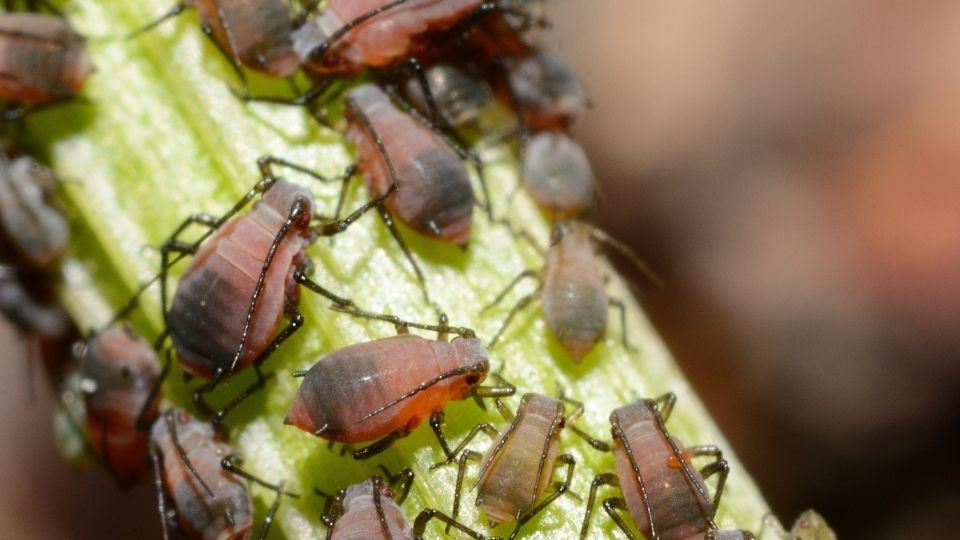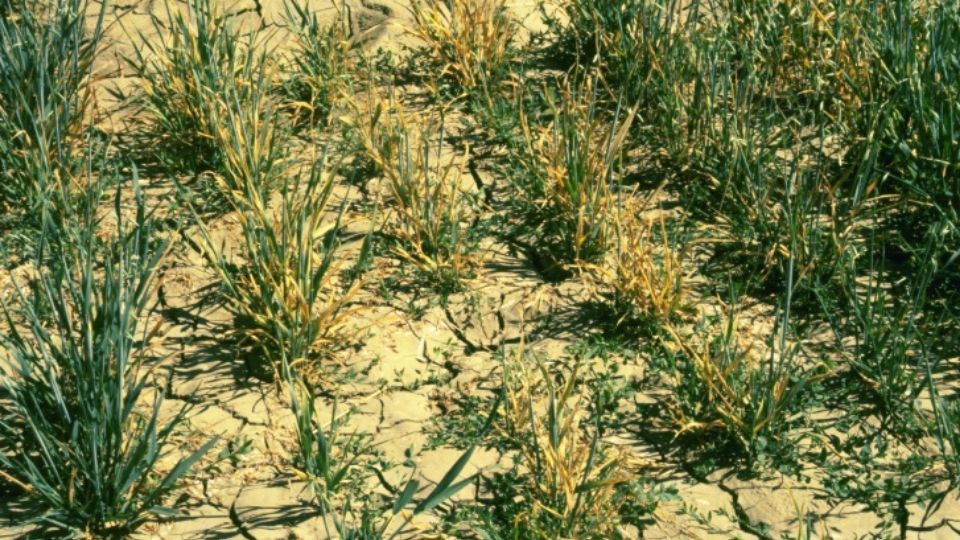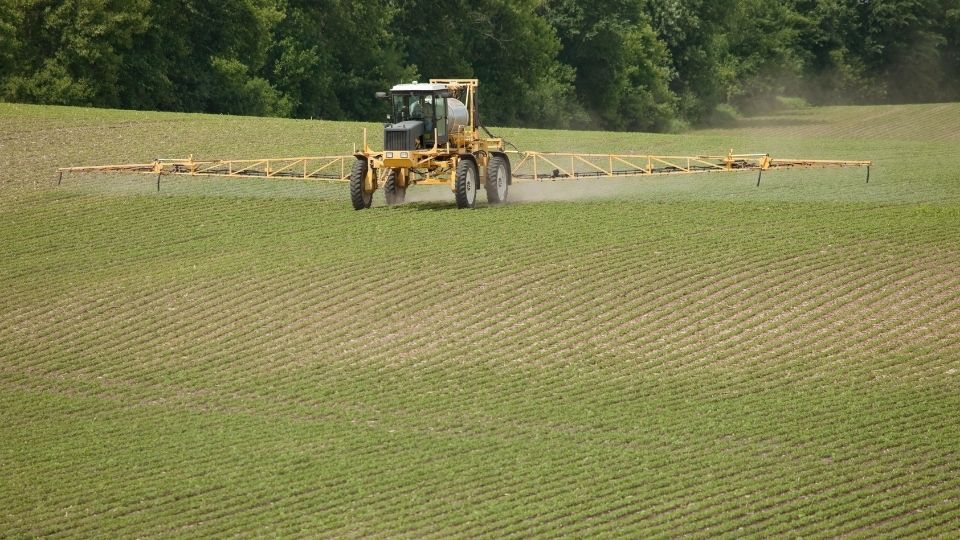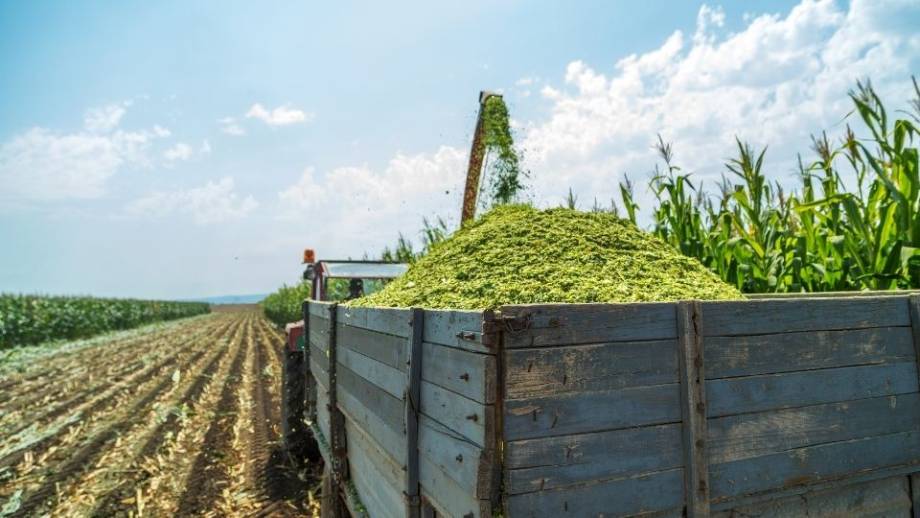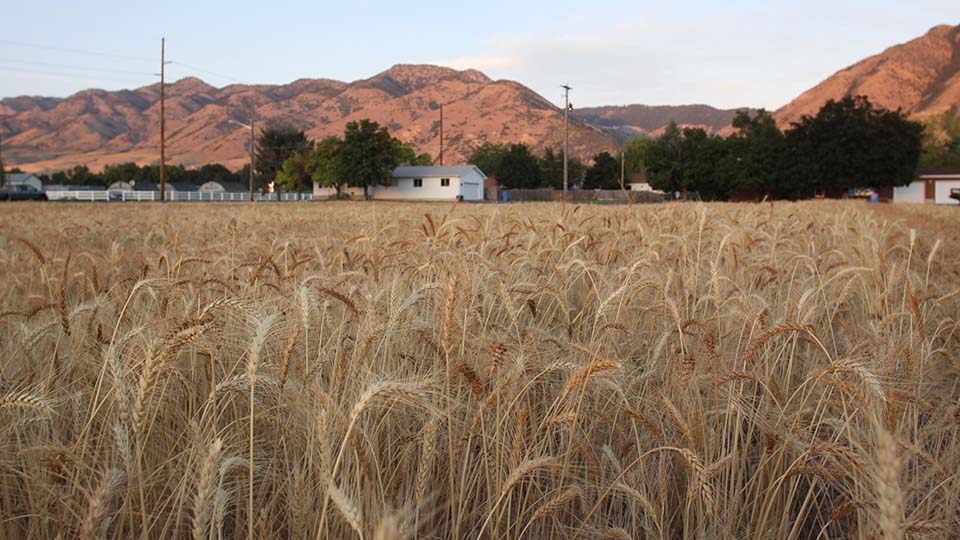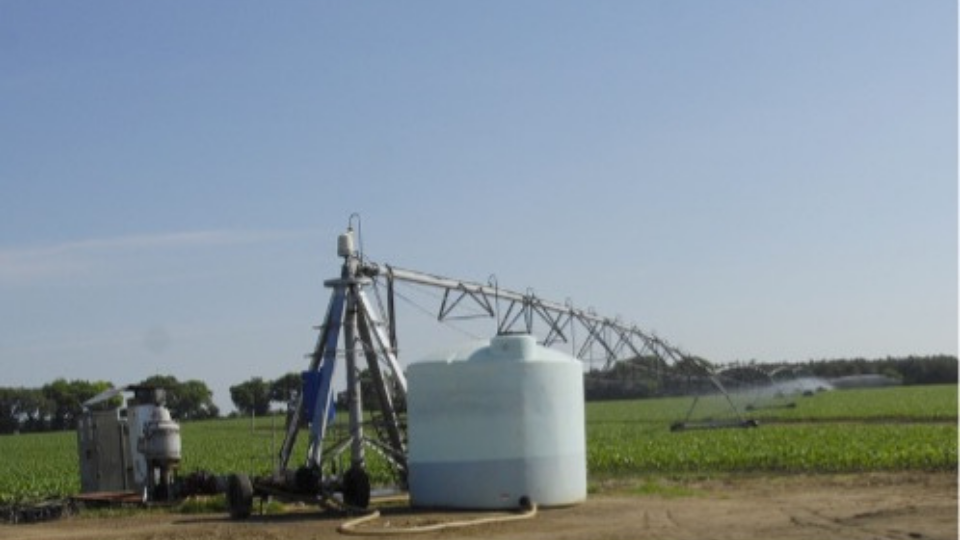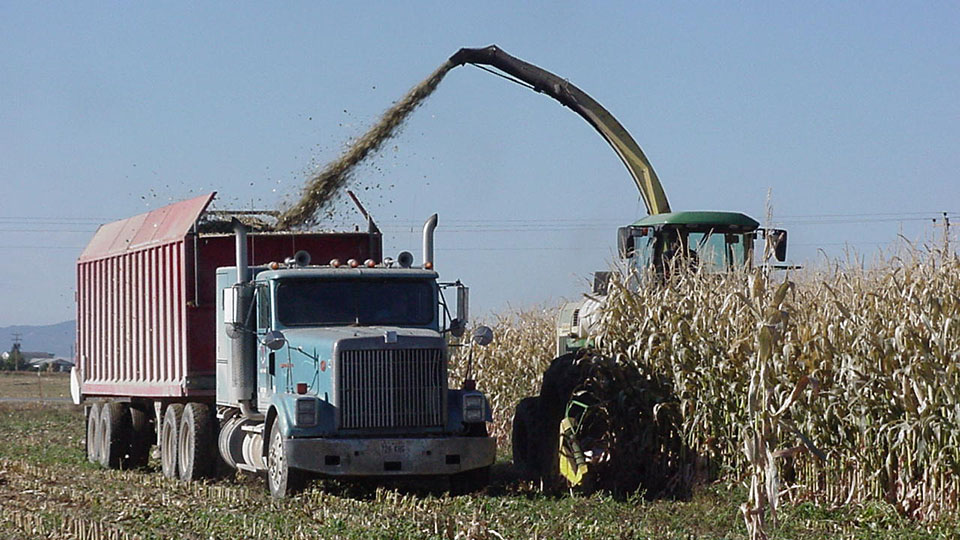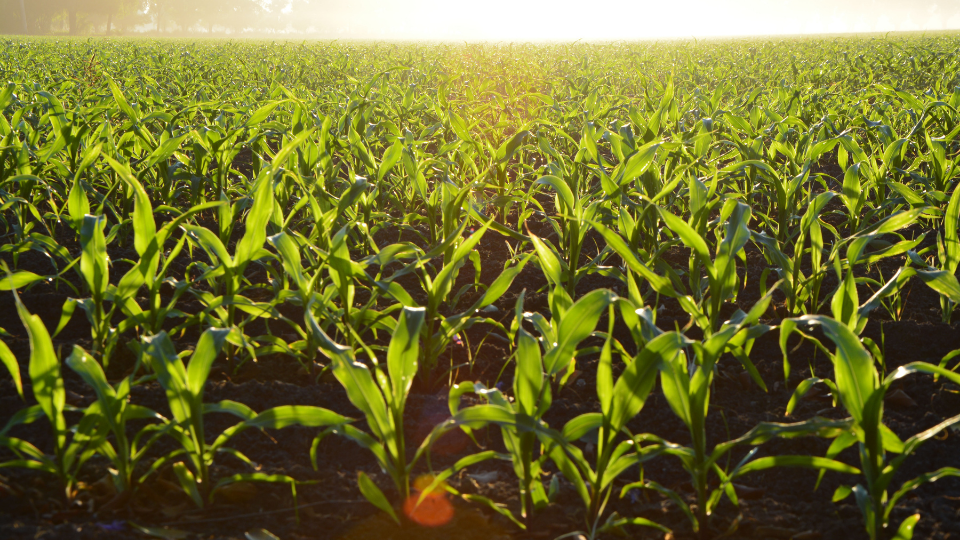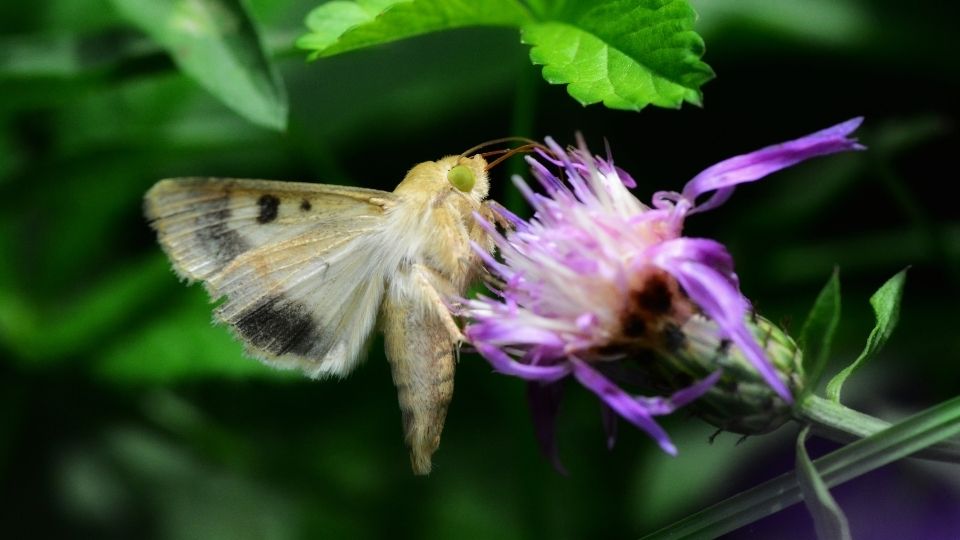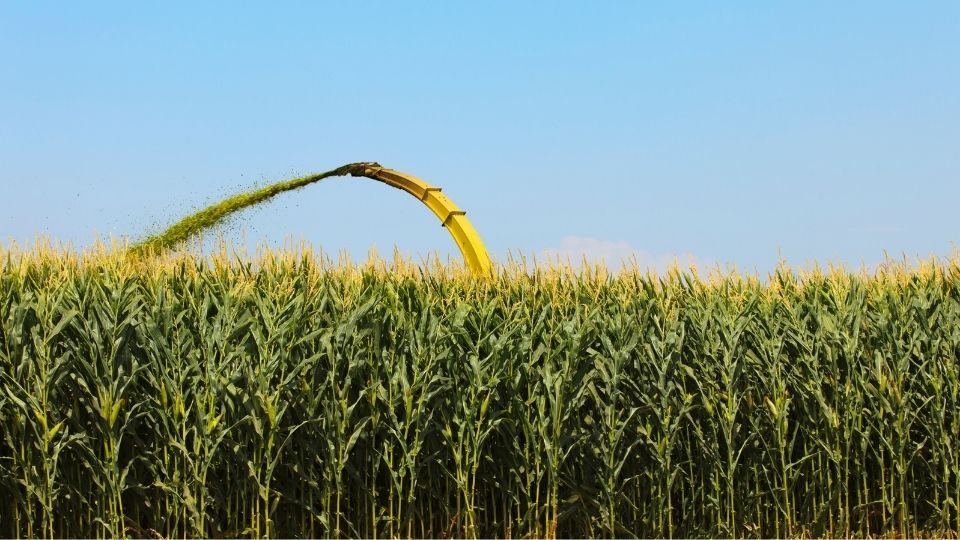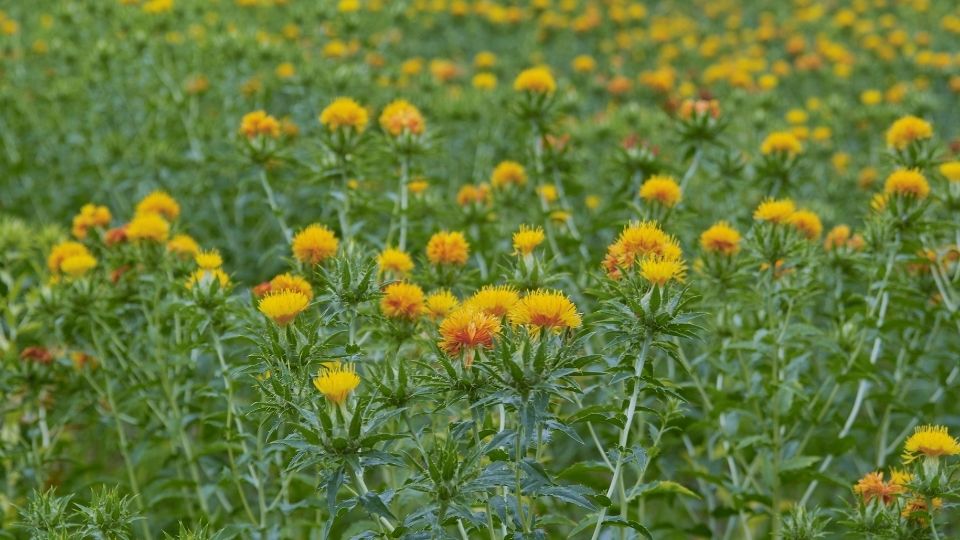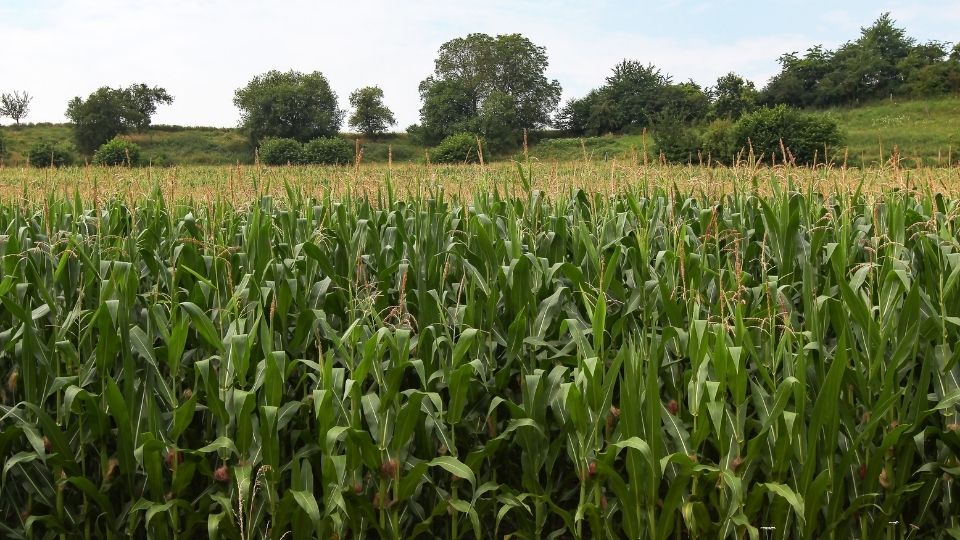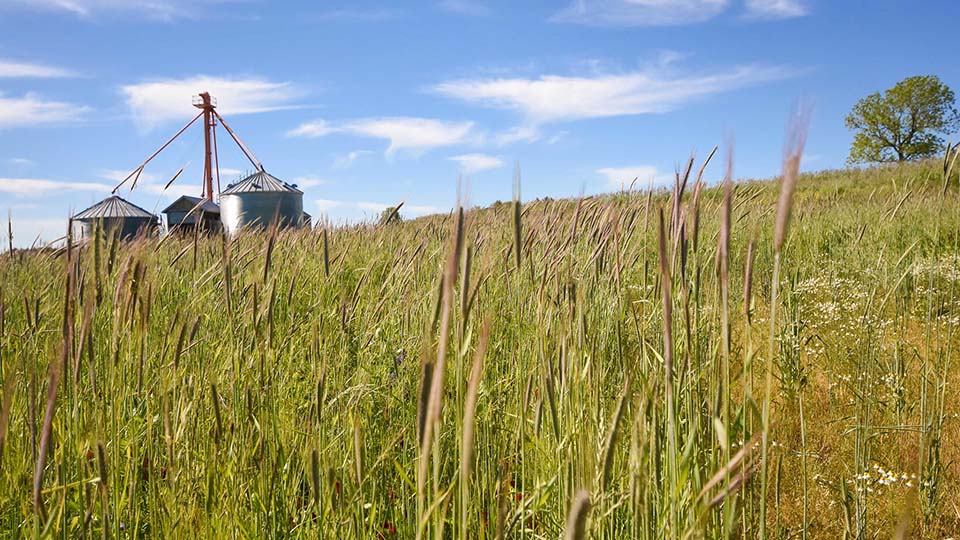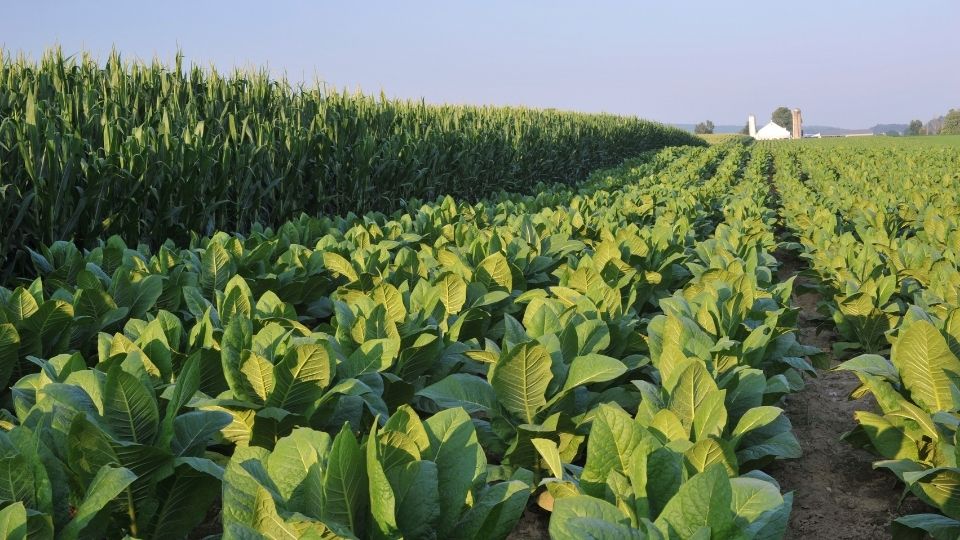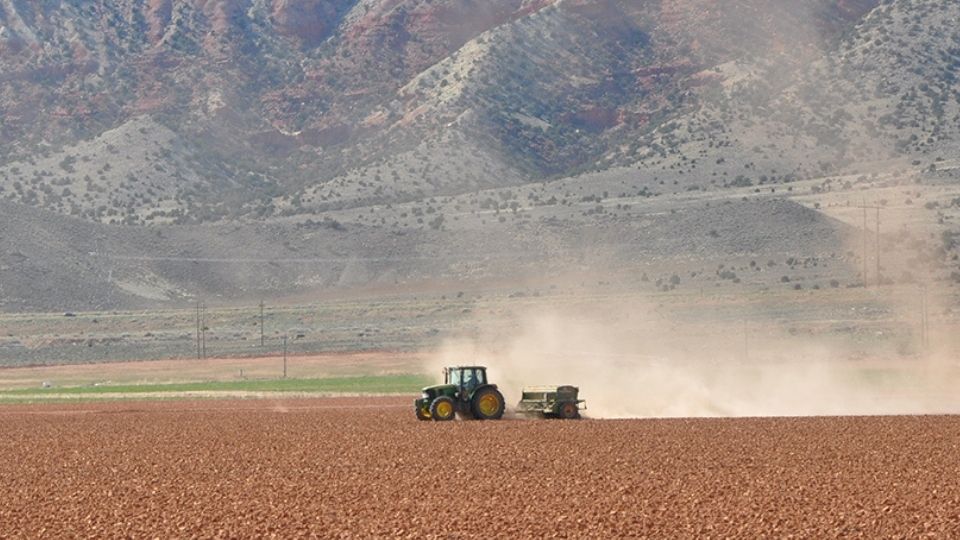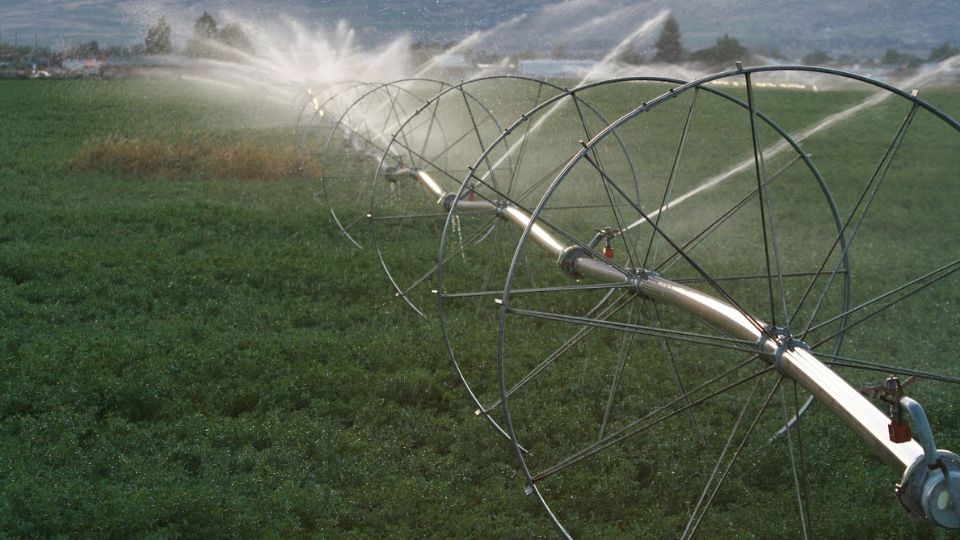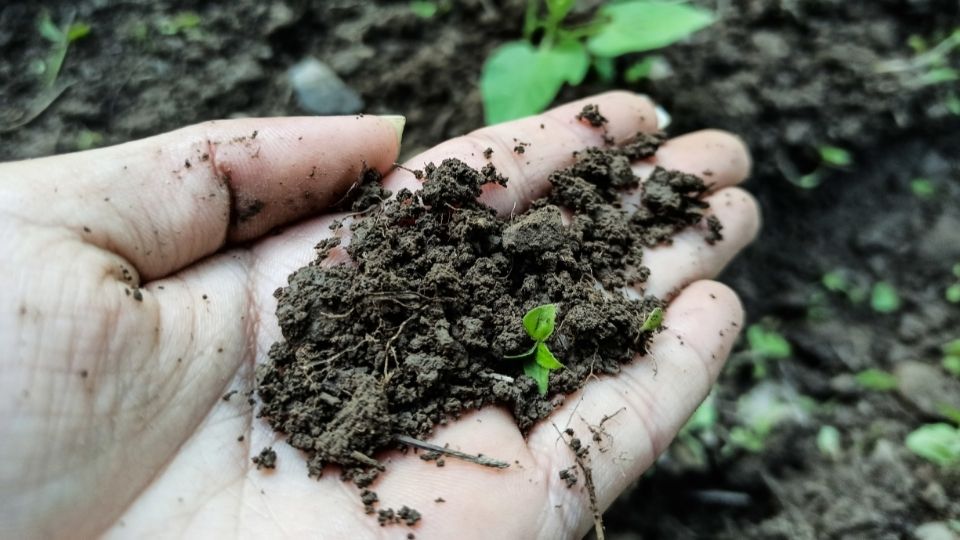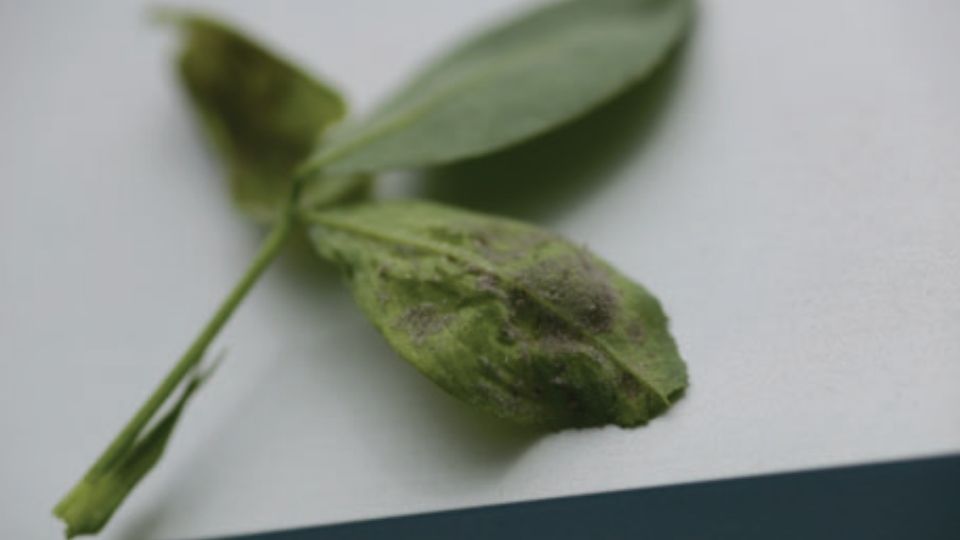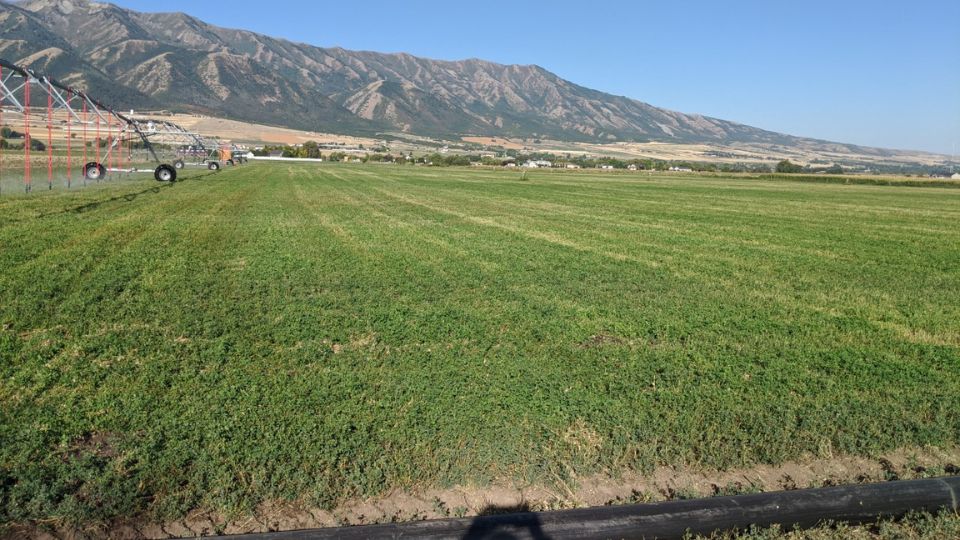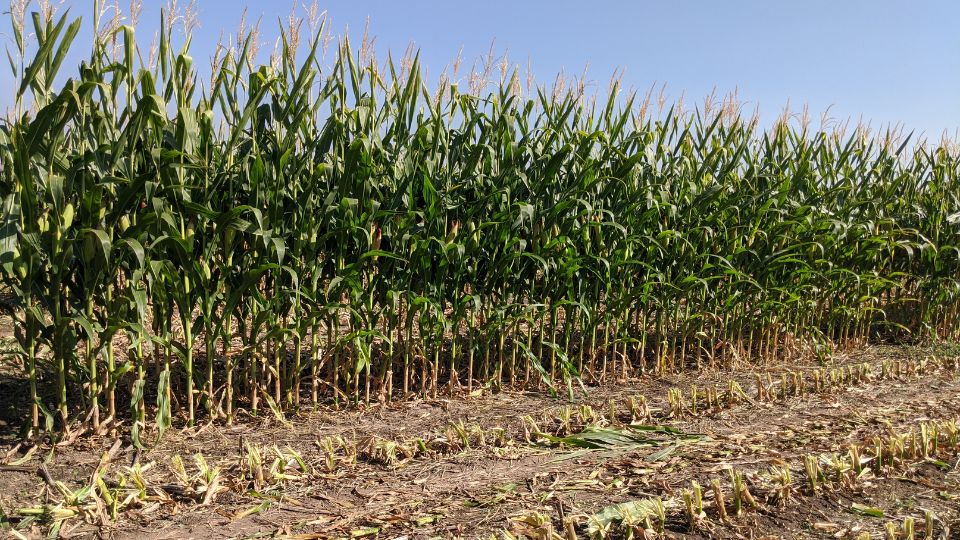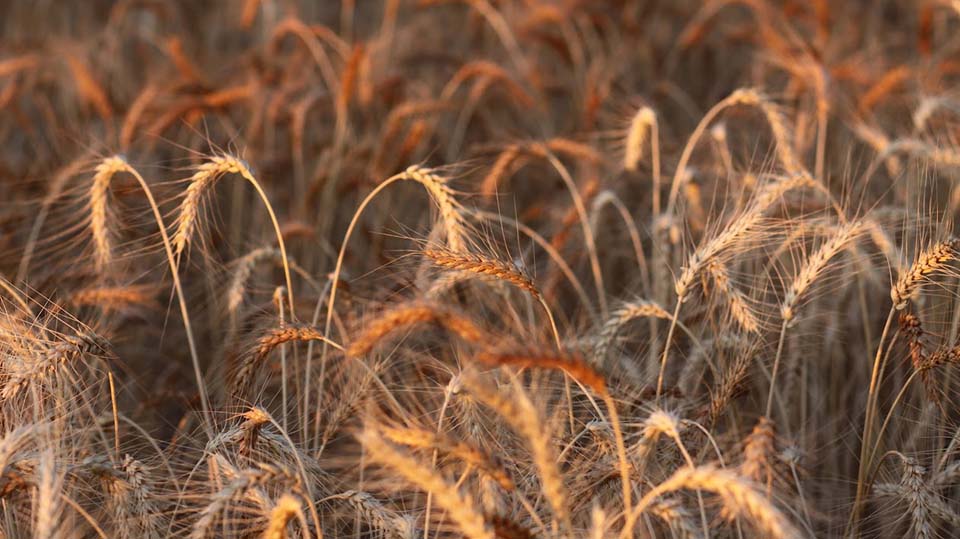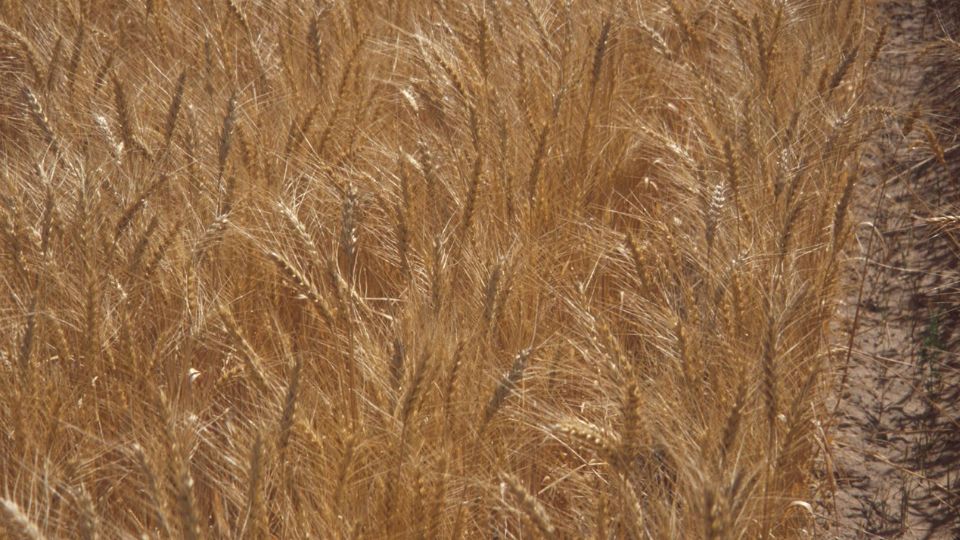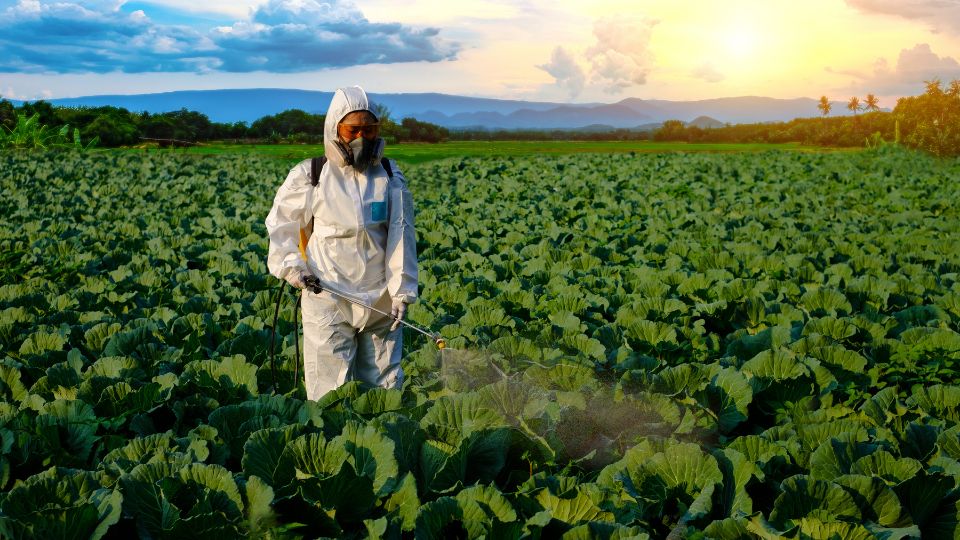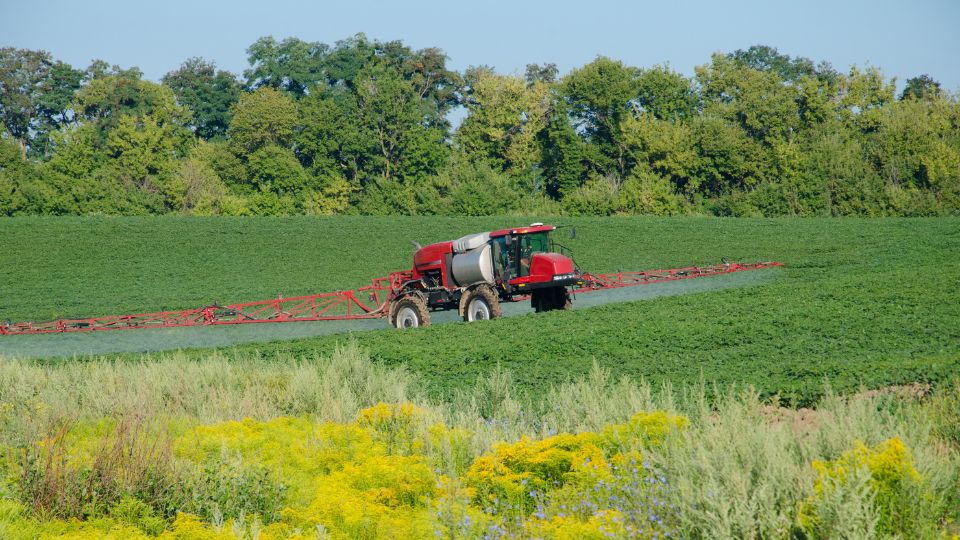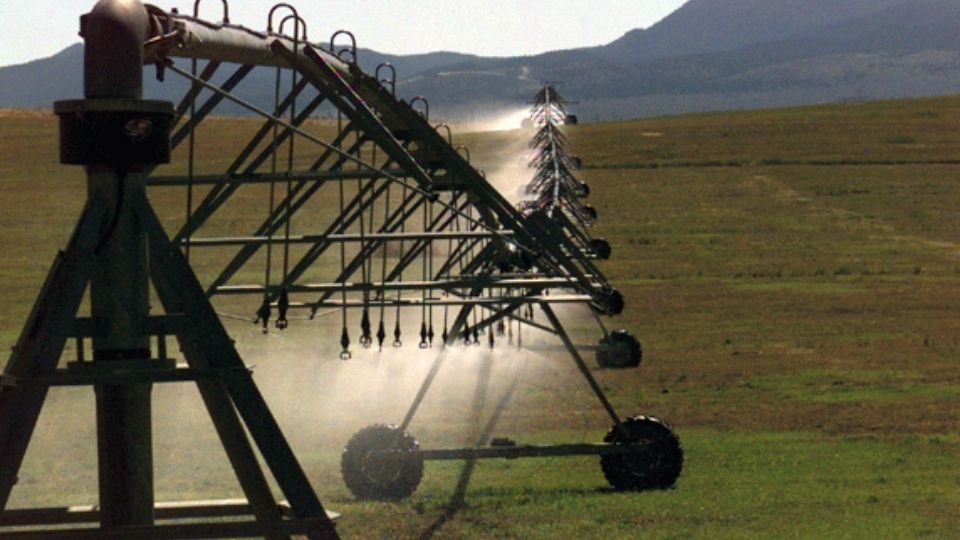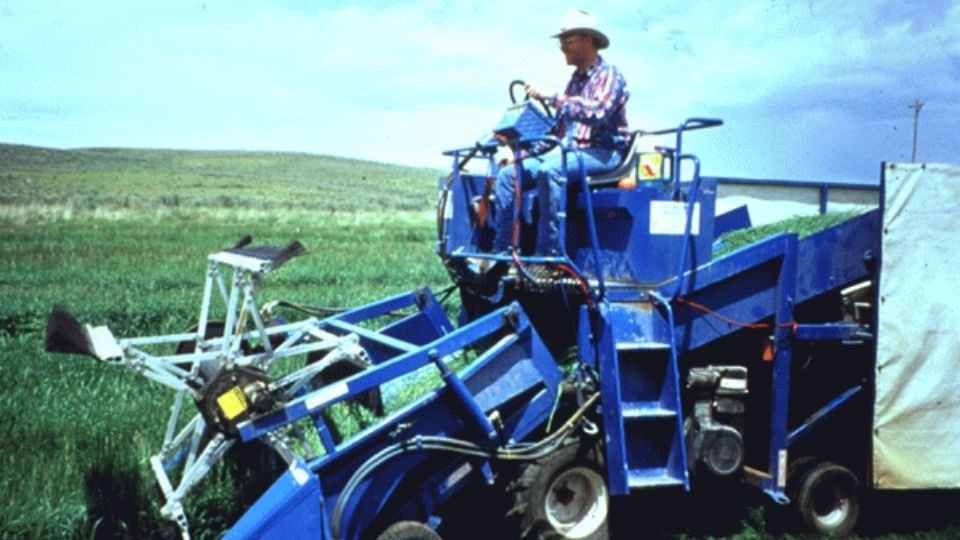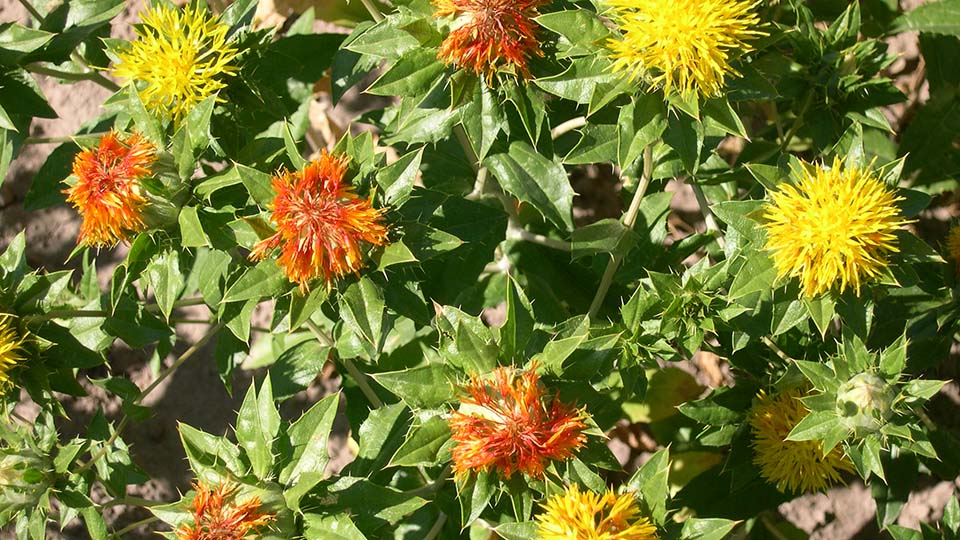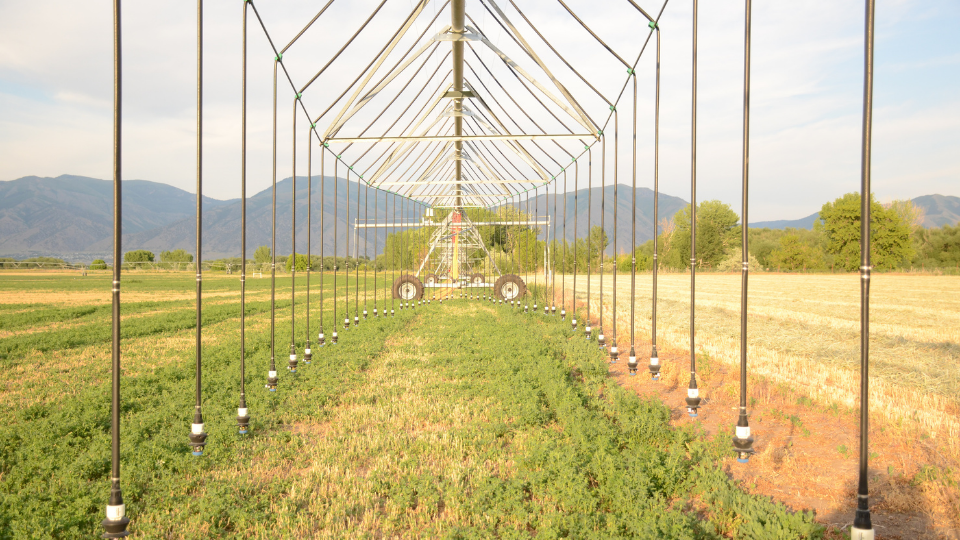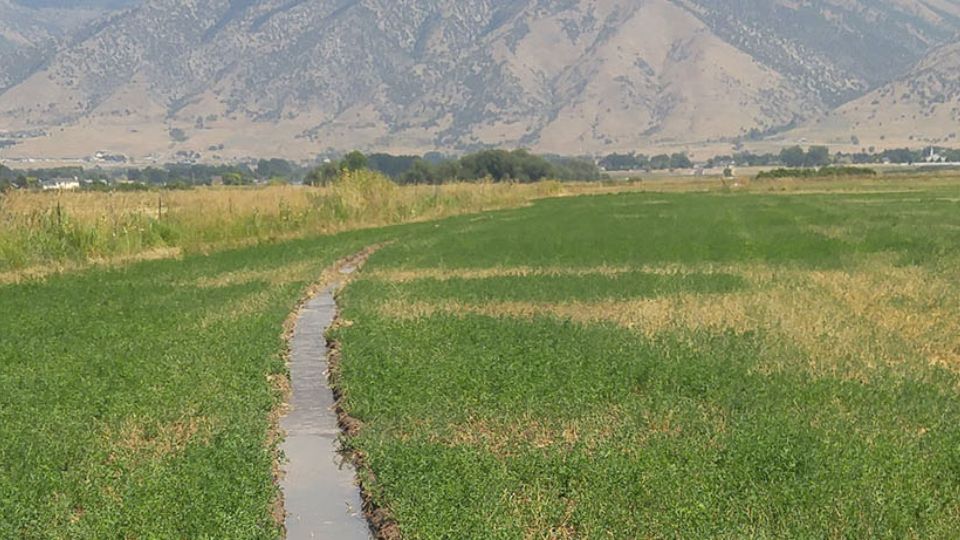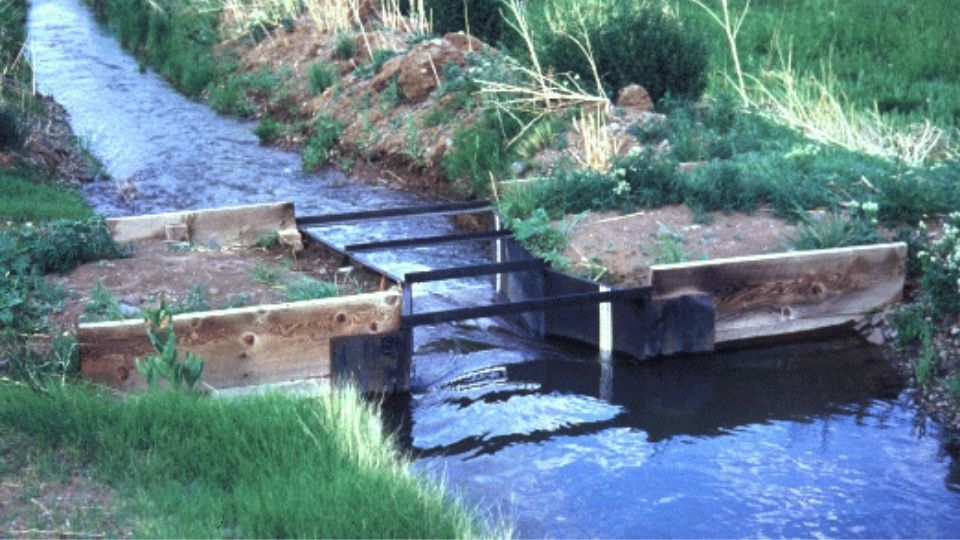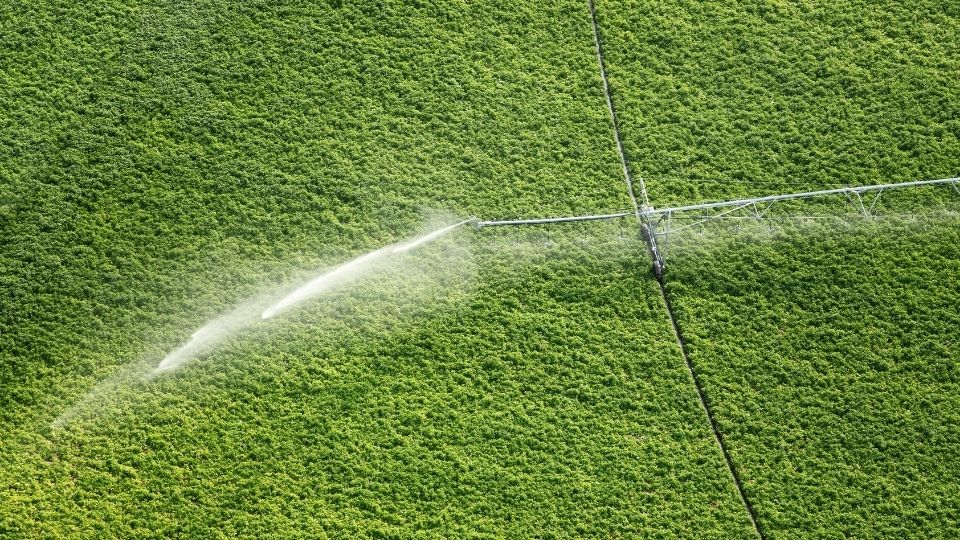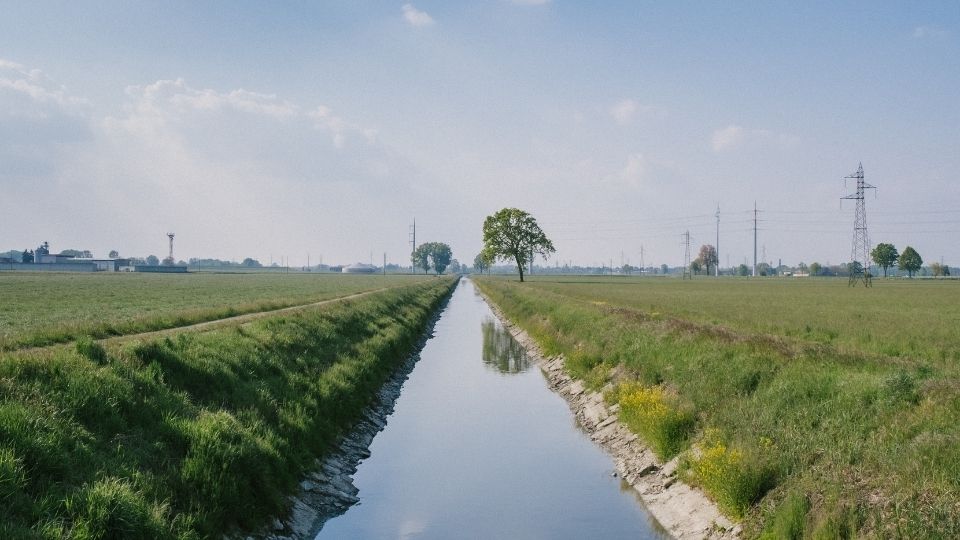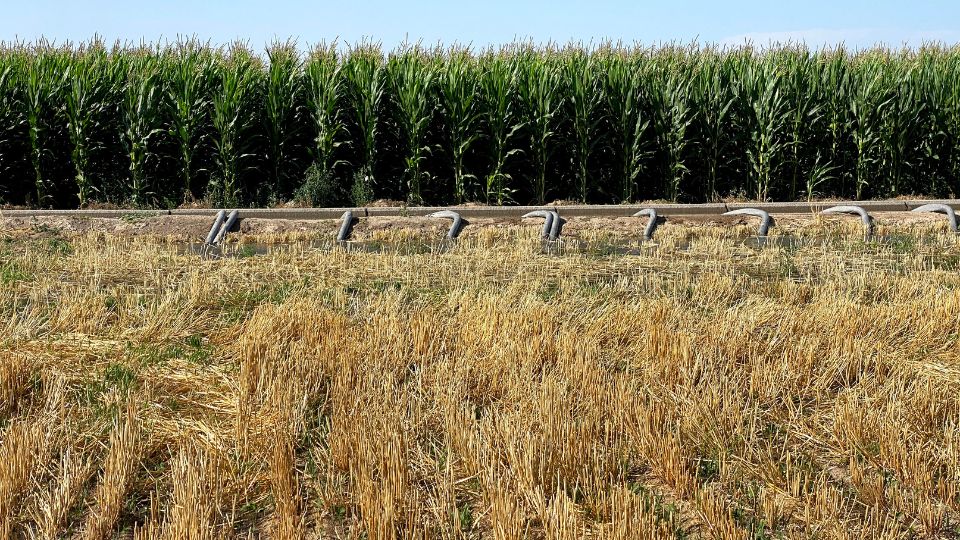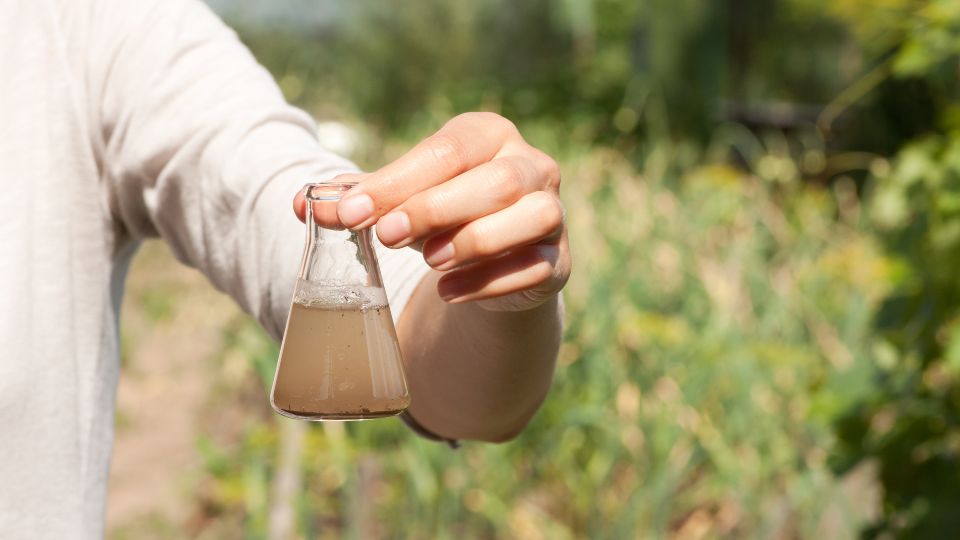Wheat Stripe Rust
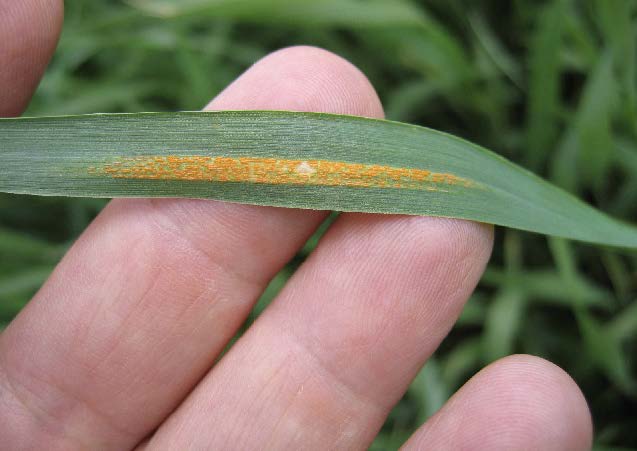
any green tissue can be infected. Uredia develop
along the length of the leaf. Each uredinium
(singular=uredinium, plural=uredinia) can produce
thousands of urediniospores.
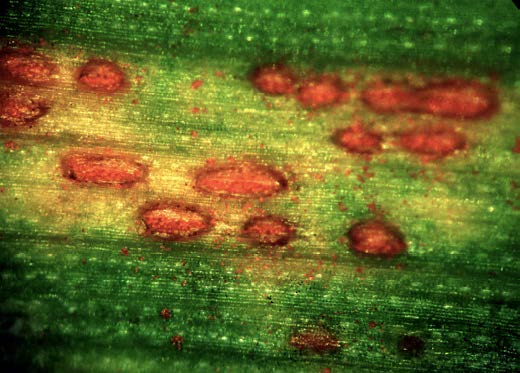
each mature uredinium. Thousands of
urediniopores can be produced in a very
short time period.
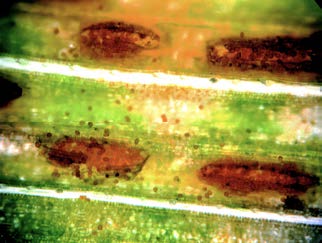
uredinium. Each spore can initiate a new infection
on a healthy plant.
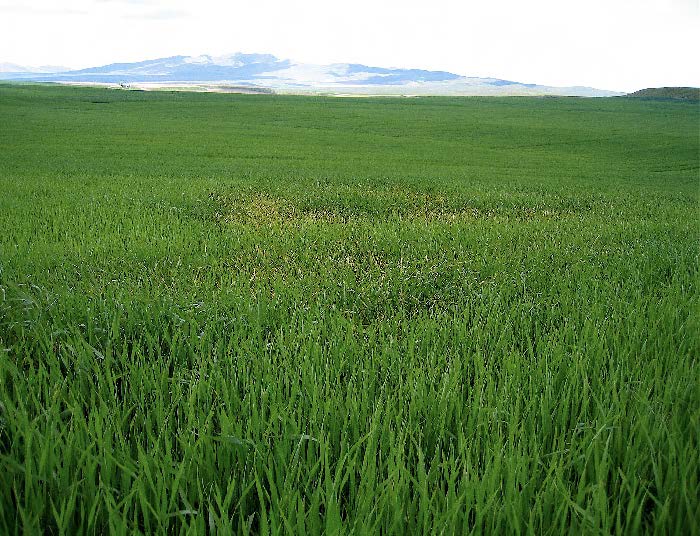
spots” often appear as yellow off-colored
foliage from a distance.
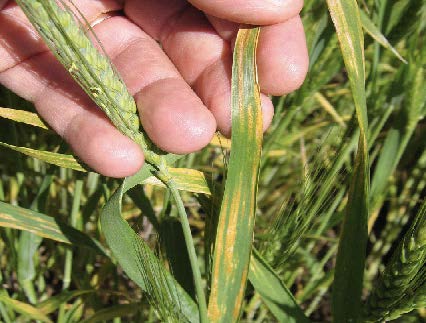
produces lesions along the axis of the leaf it
infects, thus the name “stripe rust”.
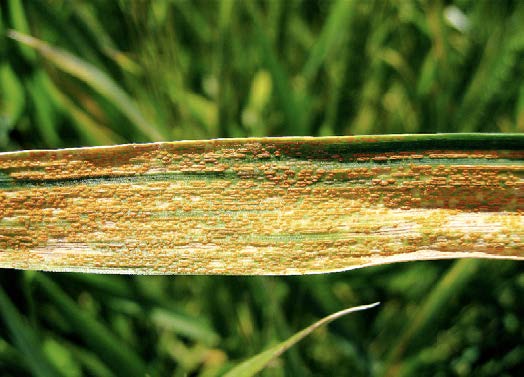
leaves and consume the nutrients synthesized
by the host plant thus robbing energy from
the plant that would normally have been
used to produce healthy grain.
What You Should Know
Stripe rust, or yellow rust, is primarily a foliar fungal disease of wheat, although it can infect spike and stem tissues. If the pathogen infects the spike (head) it causes extensive quality and grain yield loss. The disease is caused by the fungus Puccinia striiformis f. sp. tritici. The fungus can only survive and reproduce on wheat. It survives from one season to the next on volunteer plants. Mild winters and cooler wet weather in the spring and early summer favor the development of the disease. Host plant resistance is the most effective means to control the disease, hence, planting resistant cultivars is recommended. However, different races of the fungus can occur from one year to the next and might overcome resistance. A number of fungicides are labeled to control the disease but scouting and early detection are crucial to time pesticide applications for effective control.
Introduction
Stripe rust is consider ed one of the more serious fungal diseases of wheat. It infects susceptible host cultivars with symptoms occuring about one week after intial infection occurs. The disease often causes severe grain yield and quality loss as stripe rust can appear and spread rapidly when climatic conditions favor the disease. Stripe rust is reported in over 60 countries worldwide and has been reported on all continents with the exception of Antarctica. In past decade the disease has spread to wider regions within the continental U.S. as weather patterns vary.
Symptoms
Yellow uredinia (the spore producing structures of the pathogen) appear in rows somewhat linearly along the axis of the leaf (Fig. 1). These small lesions, collectively, on an entire leaf can be the result of one urediniospore infecting the wheat leaf. More commonly a leaf will be infected by one or more spores in an epidemic. Infections can appear on the spikes and on the stems of wheat under severe epidemic conditions as well. When infection occurs on the spike, significant yield losses usually occur. Early during infection, leaf tissues will be yellow and can form chlorotic streaks on the length of the wheat leaf without spores being evident. Eventually the pathogen will overcome the host and the fungal urediniospores will rupture through the surface of the leaf, stem, or spike tissues (Fig. 2). Thousands of urediniospores can arise from a very small area of infected leaf tissue (Fig. 3). These urediniospores can be spread by wind to other plants to initiate other subsequent infections.
Disease Cycle
The pathogen survives from one season to the next on volunteer wheat plants or as latent infections in dormant wheat plantings. Mild winters and cool moist springs favor the development of subsequent inoculum that can be wind blown to adjacent fields of wheat. Urediniospores can be blown over very long distances so infections in one area can be a result of spore showers. These spore showers are literally spores being washed from the sky in a rainfall or when winds slow and allow spores to settle to earth and thus inoculate plants in an area where no disease had been observed. One urediniospore is all that is required to infect a wheat plant and produce hundreds if not thousands of subsequent urediniospores. Free water on leaves and temperatures ranging from 0 to 25 C (32-77 F) are required for spore germination. Subsequent release of spores from an infected plant can occur in as few as 11 days at optimum temperatures. At near freezing temperatures the time from infection to spore release can be as many as 180 days. Hot summer temperatures and dry weather are least conducive for the pathogen. Above 25 C (77 F) the fungus becomes unable to produce spores and above 29 C (85 F), the pathogen will die. Other grasses are not thought to play any role in the overwintering survival or inoculum production of the pathogen.
Diagnosis
Scouting seeded wheat fields during cool moist spring weather is advised. Early infections appear as off-color low appearing areas (hot spots) in a newly infected field (Fig. 4). Upon locating these areas, a field scout will be wise to walk the field and pick leaves in the area of symptom observance. A hand lens is useful but not necessary to observe the small yellow rows of uredinia and the yellowish rust spores that can be wiped off onto hands, clothing, or shoes (Fig. 5). Severely infected wheat leaves can be completely covered with uredinia and produces many thousands of spores to be blown to adjacent healthy plants (Fig. 6). Eventually these leaves will be exhausted of nutrients and water extracted by the pathogen and die.
Control
Using resistant cultivars is the most economic means of controling stripe rust. Resistance is relative however as different races of the pathogen can overcome currently grown cultivars in any given area. Generally, wheat breeders and rust pathologists survey and deploy cultivars that are resistant to the known local races of the pathogen. Controlling volunteer wheat from one season to the next is a good practice for this and other wheat diseases as well. There are a number of fungicides labeled for the control of stripe rust. Tilt and strobilurin fungicides containing the ingredient propiconazole, such as Quilt, are effective. Check with your local Extension office for recommendations.
References
- Chen, X. M. 2005. Epidemiology and control of stripe rust [Puccinia striiformis f. sp. tritici] on wheat. Can. J. Plant Pathol. 27:314-337.
- Robbelen, G., and Sharp, E. L., 1978. Mode of inheritance, interaction and application of genes conditioning resistance to yellow rust. Adv. Plant Breeding, 9, 88 pp.
- Saari, E. E. and Prescott, J. M., 1985. World distribution in relation to economic losses. Pages 259-298, In: The Cereal Rusts Vol. II: Disease, distribution, epidemiology and control, A. P. Roelfs and W. R. Bushnell eds., Academic Press, Orlando, FL.
- Stubbs, R. W., 1985. Stripe rust. Pages 61-101, In: The Cereal Rusts Vol. II Diseases, distribution, epidemiology and control, A. P. Roelfs and W. R. Bushnell eds., Academic Press, Orlando, FL.
- Zadoks, J. C. and Bouwman, J. J., 1985. Epidemiology in Europe. Pages 329-369, In: The Cereal Rusts Vol. II Diseases, distribution, epidemiology and control, A. P. Roelfs and W. R. Bushnell eds., Academic Press, Orlando, FL.
- Wheat Stripe Rust, Cereal Disease Laboratory, St. Paul, MN. Online http://www.ars.usda.gov/Main/docs.htm?docid=9918.
Revised January 2008
Utah State University Extension
Peer-reviewed fact sheet
Authors
Kent Evans, Extension Plant Pathology Specialist; Clark Israelsen*, Cache County; Mike Pace*, Box Elder County; James Barnhill*, Weber County *Utah State University County Extension Agents
Related Research






